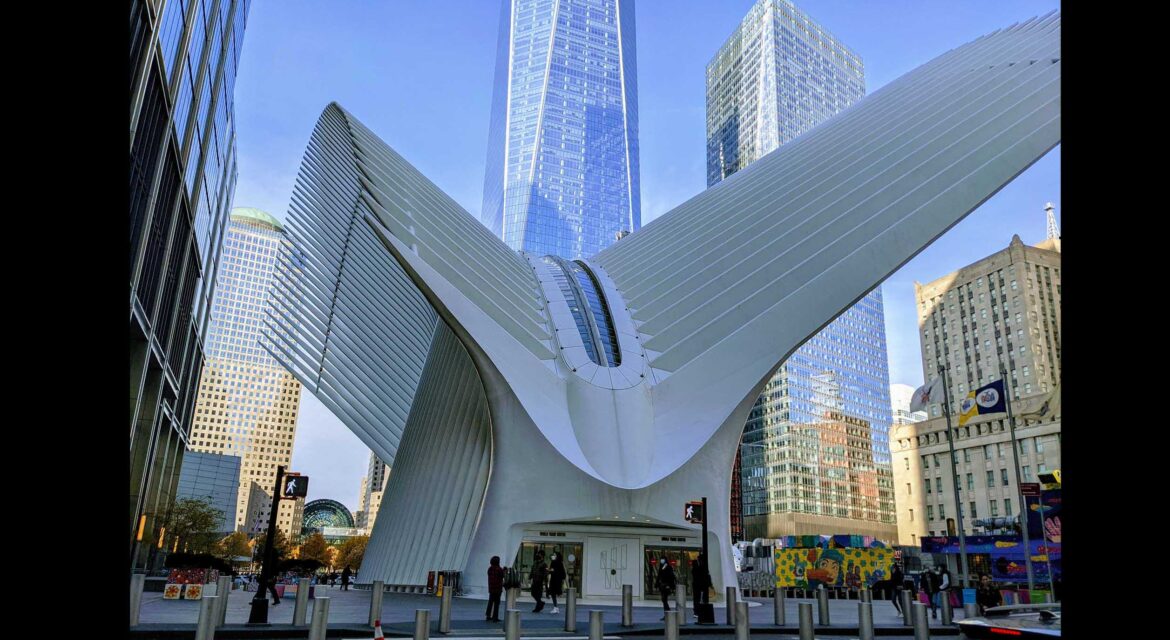 Serving over a million people every week, the Oculus station house is home to 12 subway lines and the World Trade Center Port Authority Trans-Hudson (PATH) station in New York City. As one of the largest transportation hubs in the city, the location would always be a popular one, making the effort to transform it into a monument in both form and function one that will resonate with audiences across eras.
Serving over a million people every week, the Oculus station house is home to 12 subway lines and the World Trade Center Port Authority Trans-Hudson (PATH) station in New York City. As one of the largest transportation hubs in the city, the location would always be a popular one, making the effort to transform it into a monument in both form and function one that will resonate with audiences across eras.

Transforming the World Trade Center station
 The construction of the World Trade Center in the 1960s saw the total transformation of the Hudson Terminal site which had previously served as a major rapid transportation hub for the region. After serving thousands of passengers each day for decades, the station was closed after the September 11 attacks in 2001. This would lead to a vision to create a transportation hub and shopping mall built alongside One World Trade Center.
The construction of the World Trade Center in the 1960s saw the total transformation of the Hudson Terminal site which had previously served as a major rapid transportation hub for the region. After serving thousands of passengers each day for decades, the station was closed after the September 11 attacks in 2001. This would lead to a vision to create a transportation hub and shopping mall built alongside One World Trade Center.
Designed by Spanish architect Santiago Calatrava, the new plan for the World Trade Center Transportation Hub was defined by an above-ground station house called the Oculus. The structure’s white metal-clad steel ribs reach up and into the sky in a monumental move that symbolizes a bird about to take a flight from the hands of a young boy. Defined by the interlocking white ribs that come together high above the ground, tall crossed steel columns form a pair of 350-foot wings that further project a message of hopefulness and perseverance.
The structure’s orientation serves as a lasting reminder of the attacks of September 11, 2001. It is in alignment with the sun’s solar angles on each September 11, from 8:46 am, when the first plane struck, until 10:28 am, when the second tower collapsed.
Opened in 2016, the Oculus features over 350,000 square feet of retail and dining space. It is also host to special events throughout the year, such as the Ocufluent Exhibit, with banners created in honor of the anniversary of 9/11. Various pieces of temporary art are featured in the space throughout the year, further connecting it to the community. All of this supports it being visited by 300,000 people every day and over a million on special occasions, making it a true economic hub of the area.
These activities, symbolism and structure showcase what it can mean for a monument to define a transportation hub as something so much more important to audiences and stakeholders.

The World’s Most Expensive Station
 Mentioned as one of New York’s newest architectural gems, the World Trade Center Transportation Hub could have been rebuilt in a far more utilitarian manner. It has been referred to as the world’s single most expensive station but those costs and criticisms will be forgotten in the long run due to the impact the Oculus has and will continue to make.
Mentioned as one of New York’s newest architectural gems, the World Trade Center Transportation Hub could have been rebuilt in a far more utilitarian manner. It has been referred to as the world’s single most expensive station but those costs and criticisms will be forgotten in the long run due to the impact the Oculus has and will continue to make.
In being built after the September 11 attacks, the Oculus was designed to represent the city’s strength and has become a beacon for resilience. By creating a monument that has become an architectural icon as well as an essential element of tours and guides to the city, the Oculus showcases what it can look like when a functional transportation space is envisioned as something much more to audiences and for a city.

